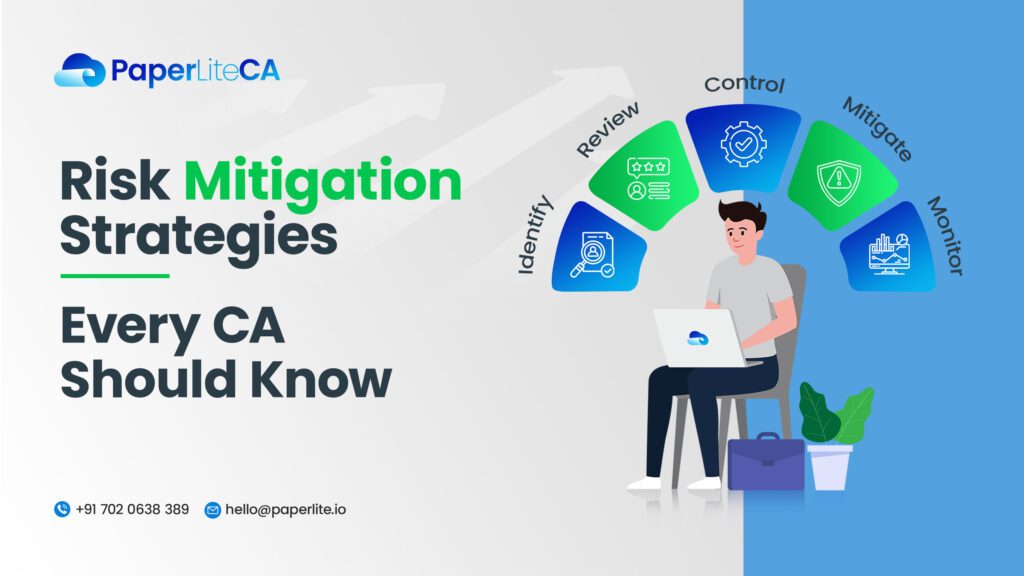Risk Mitigation Strategies Every CA Should Know

A client’s success depends quite a lot on the financial advice given by a CA and the strategies implemented. It is the duty of the CA to look out for the greater good of their client and reduce the risk factor and its impact. These risks can be financial or operational, and among the many strategies implemented by a CA, risk mitigation is a very crucial one. CAs can use their knowledge of financial reporting, auditing, and risk management together to help companies and individuals make informed decisions on ways to mitigate risks. Here in this blog, you will find the steps that a chartered accountant can take to safeguard their clients and their businesses from financial loss, reputational damage, and other negative consequences, among other risks. Risk Mitigation Strategies for a CA : Identifying and Analyzing Risk: The first step in the formation of any further risk mitigation strategy is to first identify the risk. Post-identification, a risk assessment and analysis would help identify all possible outcomes or impacts of the risk, helping a company take the necessary course of action. Advantages of Risk Analysis: Thorough Risk Analysis and assessment has various benefits like, increases awareness, cost reduction, regulatory compliance and helps prepare for future projects too. Put in place controls: After identifying and assessing risks, we implement controls to reduce the impact of the risks. These controls can be either of the three: Regular monitoring of the risks and controls applied: Regular monitoring of risks and applied controls ensures that they remain effective and detects the need for applying newer ones. You can conduct this routine monitoring through internal audits and other means. Communicate risks with staff and stakeholders: Regularly train and keep employees informed about operational risks and financial risks, their impact on the organization, and how they can minimize these risks. Inform clients and stakeholders about risks and controls to align everyone on potential risks. Backup Plan: A backup or contingency plan comes into play for a risk that has already taken place. A backup plan helps minimize the impact of the risk and includes ways to cope with the damage caused by the risk. Here are some additional strategies for risk mitigation that CAs should be aware of: Staying up-to-date with regulations and compliance: A CA should stay updated on the latest regulations in order to ensure their companies are compliant. This ensures the prevention of last-minute fines and penalties. Make technology your best friend: The use of technology to their advantage sets a lot of companies apart from the rest. The management of tasks, clients, and services can become tedious and monotonous. Software like PaperLiteCA come to the aid of CAs for efficiently managing their tasks, clients, employees, and services simultaneously through automation. This not only makes the workflow smooth but also ensures that the work done is error-free, which is one less risk factor for the company. Easy Communication and Rapport: Establishing mutual trust and rapport between staff and clients through easy communication facilitates the quick identification of risks, thereby aiding in their mitigation. Obtain appropriate insurance coverage: To safeguard the company from any reputational risk, the company should proactively arrange insurance coverage. These policies should also include: Carry out a routine review of these insurance coverages to check their validity. Common Tools for Risk Mitigation: Some common tools that CAs can use for Risk Mitigation are as follows: Conclusion: In essence, chartered accountants act as regulators and guardians for their clients and businesses. They identify and analyze risks, establish controls, and stay updated on regulations and compliance. Their expertise is pivotal in safeguarding companies from financial pitfalls, reputational harm, and other risks, ensuring effective risk mitigation.
